Spicy Southern Jambalaya Recipe: A Soul-Warming Delight
Whipping up a hearty jambalaya instantly transports you to the vibrant streets of New Orleans.
Spices dance together, creating a symphony of flavors that sing Louisiana’s culinary story.
Shrimp, sausage, and chicken mingle in a rich, colorful dish that promises comfort and excitement.
Bold ingredients blend seamlessly, telling tales of cultural fusion and family traditions.
Each bite carries the warmth of southern hospitality and generations of passionate cooking.
Adventurous taste buds will find pure magic in this one-pot wonder that connects you directly to the heart of creole cuisine.
Grab your skillet and let the culinary journey begin!
Jambalaya Loaded With Cajun and Creole Flavors
Ingredients Found in Jambalaya
For the Proteins:For the Vegetables:For the Liquids and Seasonings:Step-by-Step Guide to Making Jambalaya
Step 1: Sizzle Veggie Base
Heat olive oil in a large pot over medium heat. Toss in chopped onions and bell peppers.
Sprinkle with salt and pepper. Cook until vegetables become soft and slightly translucent, stirring occasionally (about 7 minutes).
Step 2: Brown Protein Medley
Add chicken pieces and sprinkle oregano over the vegetables. Season with additional salt and pepper.
Cook until chicken turns golden brown (about 5 minutes). Introduce sliced sausage, tomato paste, and minced garlic.
Stir and cook until everything becomes wonderfully fragrant (about 1 minute).
Step 3: Create Hearty Base
Pour in:Reduce heat to medium-low, cover the pot, and let everything simmer.
Allow rice to absorb liquid and become tender (about 20 minutes).
Step 4: Finish with Seafood
Gently fold shrimp into the jambalaya.
Cook until shrimp turn pink and are just cooked through (about 3-5 minutes).
Step 5: Plate and Garnish
Scoop jambalaya into serving bowls.
Sprinkle freshly sliced scallions on top. Serve piping hot and enjoy this Louisiana classic!
Helpful Tips for Perfect Jambalaya Every Time
Flavor Variations for Jambalaya You Can Try
Foods That Pair Well With Jambalaya Dish
Best Storage Methods for Jambalaya
FAQs
Jambalaya combines three key proteins: chicken, sausage, and shrimp, creating a rich, hearty meal with Creole and Cajun influences from Louisiana.
The spice level depends on the type of sausage and seasoning used. Old Bay and optional hot sauce can add heat, but you can control the spiciness by adjusting ingredients.
Yes, you can substitute chicken with turkey, use andouille or smoked sausage, and swap shrimp for other seafood like crawfish or crab.
Print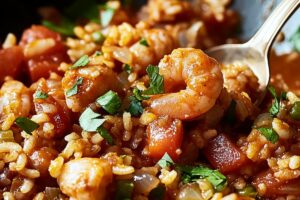
Jambalaya Recipe
- Total Time: 45 minutes
- Yield: 6 1x
Description
Spicy southern Jambalaya brings Louisiana’s soulful culinary magic straight to dinner tables with bold Creole flavors. Hearty rice, smoky sausage, and tender chicken create a one-pot marvel you’ll crave again and again.
Ingredients
Meat and Seafood:
- 1 pound boneless, skinless chicken breasts, cut into 1-inch pieces
- 6 ounces (170 grams) andouille sausage, sliced
- 1 pound (450 grams) medium shrimp, peeled and deveined
Vegetables and Aromatics:
- 1 yellow onion, chopped
- 2 bell peppers, chopped (seeds and ribs removed)
- 2 cloves garlic, finely chopped
- 2 scallions, thinly sliced
Pantry and Seasoning Ingredients:
- 1 tablespoon extra-virgin olive oil
- 1 teaspoon dried oregano
- 2 tablespoons tomato paste
- 2 cups low-sodium chicken stock
- 1 (15-ounce) can crushed tomatoes
- 1 cup long-grain rice
- 2 teaspoons Old Bay seasoning
- Kosher salt, to taste
- Black pepper, to taste
Instructions
- Warm olive oil in a spacious pot over medium heat, introducing diced onions and vibrant bell peppers. Season with salt and pepper, allowing vegetables to soften and release their aromatic essence for approximately 7 minutes.
- Introduce chicken seasoned with oregano, searing until golden and developing rich caramelized edges. Incorporate sliced sausage, minced garlic, and tomato paste, stirring until fragrant and creating a robust flavor foundation.
- Stream chicken stock into the pot, followed by crushed tomatoes and rice. Sprinkle Old Bay seasoning for depth, then reduce heat to medium-low. Cover and let the mixture simmer gently, allowing rice to absorb liquid and become perfectly tender, about 20 minutes.
- Delicately fold in raw shrimp, nestling them into the jambalaya’s warm layers. Cook until shrimp transform to a delicate pink hue and reach precise doneness, roughly 3-5 minutes.
- Transfer the steaming jambalaya into serving bowls, creating inviting individual portions. Garnish with thinly sliced scallions, adding a fresh, crisp finish to this vibrant Louisiana-inspired dish.
Notes
- Customize heat levels by adjusting cayenne pepper or hot sauce according to personal spice tolerance.
- Use long-grain white rice for best texture and absorption of rich flavors.
- swap chicken for tofu, use turkey sausage, or make vegetarian with extra vegetables.
- Prep ingredients beforehand to streamline cooking process and ensure even cooking of proteins and vegetables.
- Prep Time: 15 minutes
- Cook Time: 30 minutes
- Category: Lunch, Dinner
- Method: Simmering
- Cuisine: Cajun
Nutrition
- Serving Size: 6
- Calories: 371 kcal
- Sugar: 4 g
- Sodium: 590 mg
- Fat: 12 g
- Saturated Fat: 3 g
- Unsaturated Fat: 8 g
- Trans Fat: 0 g
- Carbohydrates: 33 g
- Fiber: 3 g
- Protein: 35 g
- Cholesterol: 125 mg

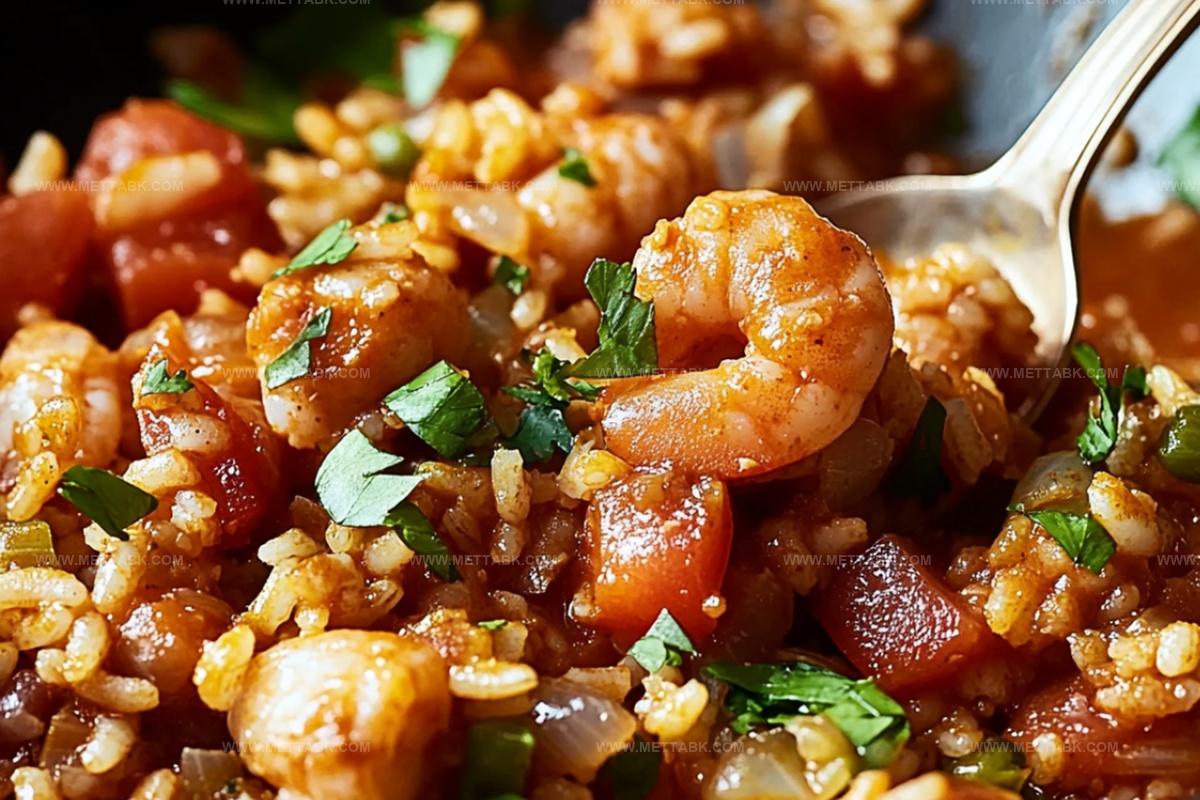
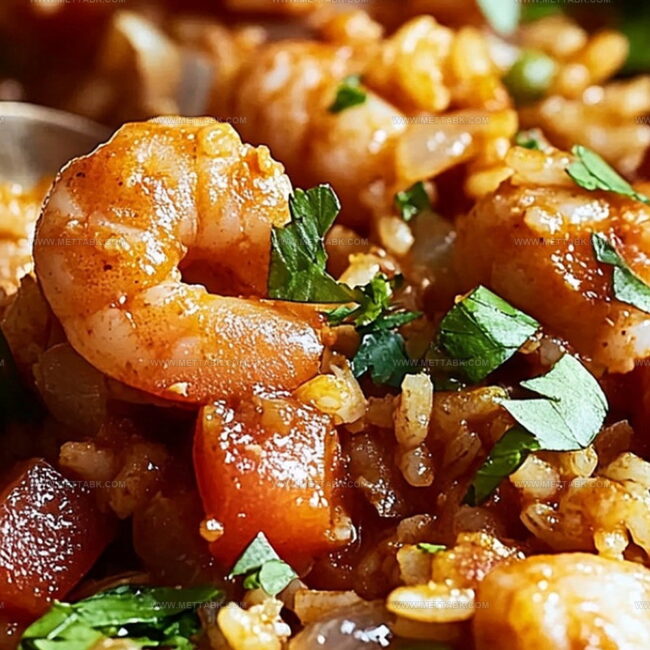
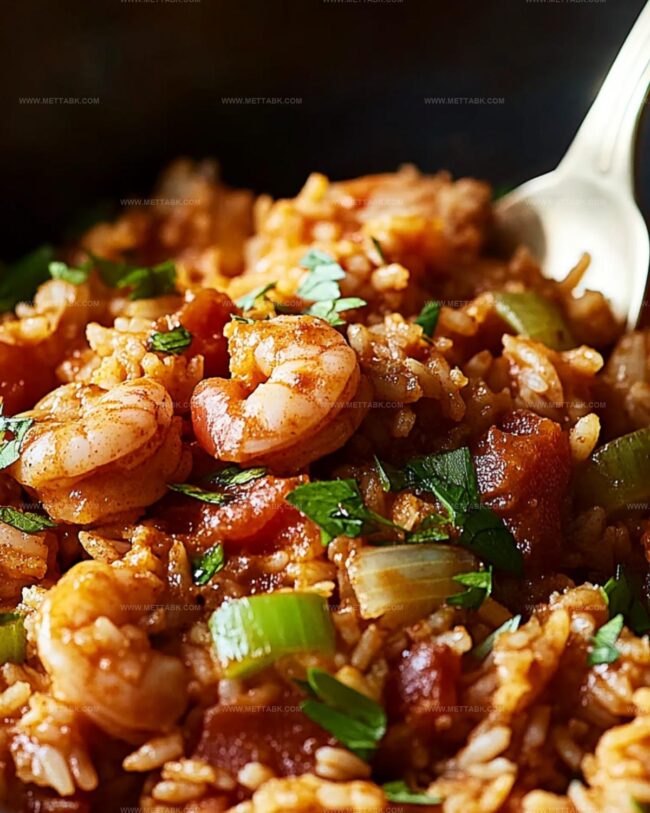
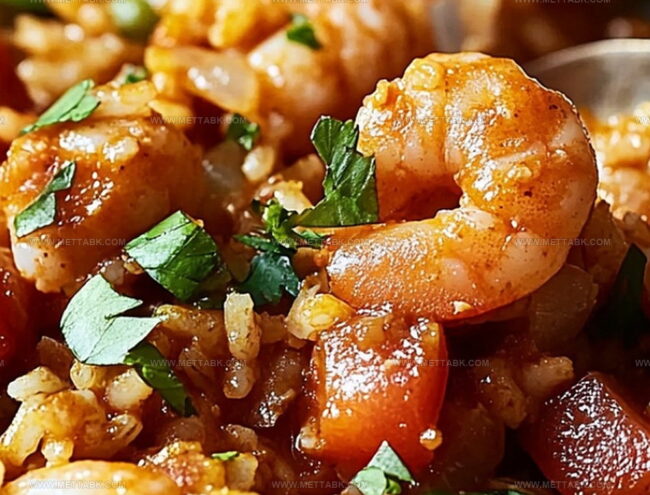
Clara Bennett
Contributing Recipe Developer & Food Writer
Expertise
Baking and Pastry Development, Gluten-Free and Allergy-Friendly Recipe Creation, Culinary Storytelling and Food Journalism, Recipe Testing and Standardization, Southern Comfort Foods and Modern Twists
Education
Sullivan University – National Center for Hospitality Studies
Associate Degree in Culinary Arts
Focus: Baking and Pastry Arts, Recipe Testing, and Culinary Journalism.
Clara specialized in crafting desserts that blend classic Southern comfort with modern techniques, while developing strong writing skills to tell the story behind every dish.
Lane Community College (Certificate Program)
Certificate in Food Writing and Photography
Focus: Culinary storytelling, recipe formatting, food styling, and visual presentation.
Clara’s love of baking started young, powered by homemade pies, biscuits, and stories passed around the family table.
After earning her degree at Sullivan University and a food writing certificate at Lane Community College, she turned her passion into a craft: sharing recipes that are simple, soulful, and always full of heart.
She’s big on bold flavors, flexible ideas, and creating sweets that fit any table (yes, even if you’re gluten-free). When she’s not baking, you’ll find her wandering farmers’ markets, styling food for the next photo shoot, or working on her ever-growing recipe journal.